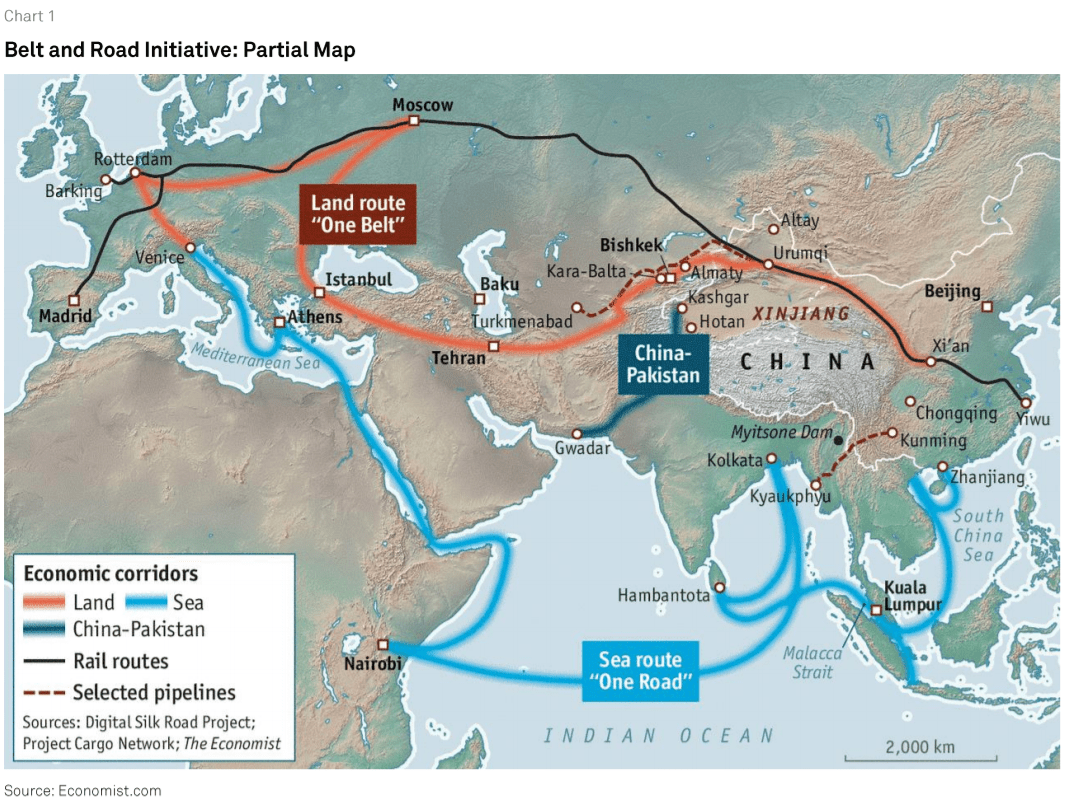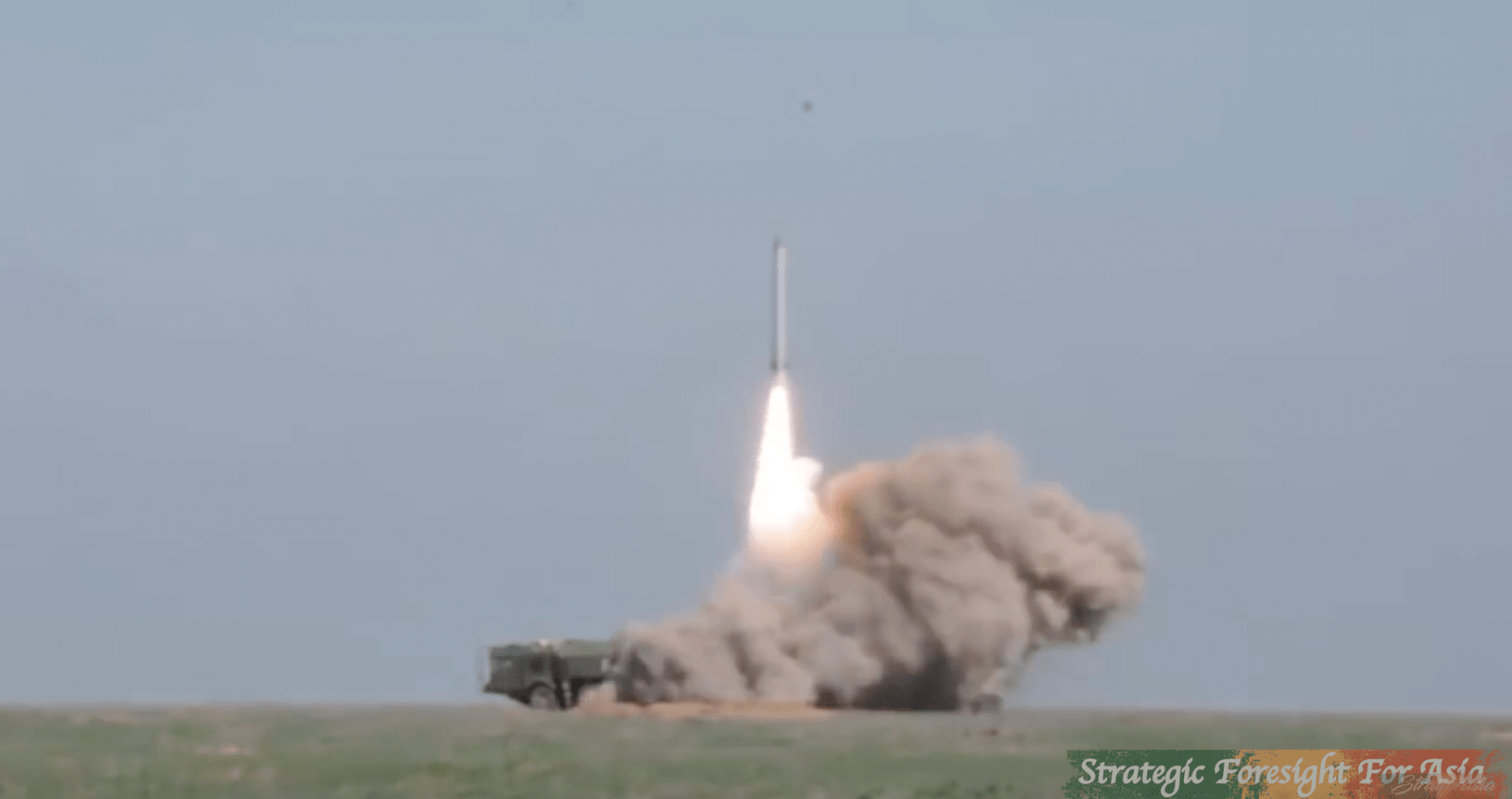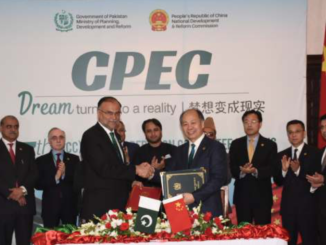
Less than two months before the convening of the most important global gathering in the neighbourhood of Pakistan and India, the Belt and Road Initiative (BRI) Forum in Beijing on April 25, the Pulwama Incident threatened the stability of the world’s most strategic region, where four nuclear powers interface with each other, while another, Israel, hovers in the background. While there may not be a direct linkage with BRI, Pulwama was an Indian attempt to replicate the post 9/11 ‘American Model’ of using military might to ‘shock and awe’ a smaller country into submission, albeit, on a regional scale. It can even be viewed as the first ‘test’ proxy conflict in the New Cold War that is sought to be ignited by the United States and its Indian allies against the China ‘threat,’ with Pakistan as the favourite whipping boy. That this attempt backfired has some strategic lessons for the region, evident that the world has been transformed in a number of ways since 9/11.
Three such changes are obvious, which directly impinge on the emerging balance of political and military power between Pakistan and India in South Asia. First, the inexorable shift of the centre of global gravity from the West to the East reflected in the upcoming BRI summit beginning in Beijing on April 25. The first such BRI Forum took place in May 2017, with the attendance of 29 leaders. This time, 37 foreign leaders, presidents, and prime ministers will attend including, for the first time, a G-7 country, Italy, despite strident opposition from the United States. Presidents of Russia, Indonesia, the Philippines and Prime Ministers of Pakistan and Malaysia are amongst the prominent invitees. Sulking India continues to stay away from the BRI. The BRI Forum being held in Beijing will have a total attendance of over 5000 representatives from over 100 countries.
The BRI Forum comes amidst the historic transition in the global balance of economic, cultural and political power from the West to the East, with the West including the United States and Europe in relative decline and even disarray, as opposed to the confidence exuded in Asia by its political and economic resurgence. Beijing is today a more “happening” place than Washington, London or Brussels, with 30% of global growth fuelled by China.
Second, the BRI, as the most significant developmental and diplomatic initiative of the 21st century, today is the principal driver of globalization, spanning 6 corridors spread over 70 countries of Asia, Africa, Europe and the Middle East, which comprise 70% of the world’s population, 55% of the global GDP and nearly 25% of global trade. The scale, size, and speed of the BRI launched five years ago, is simply breath-taking. More disconcerting for the US and India, the China-Pakistan Economic Corridor (CPEC) is not only the flagship and pilot project of BRI, but it is also a success story, with the first phase completed on schedule and now poised to enter the second phase with the broadening and expansion of CPEC.
Third, BRI is a direct political response and economic challenge to a world order that sought to retain the Asia-Pacific Region (now suddenly dubbed as the ‘Indo-Pacific’) as an “American lake.” Let us rewind to 2011 to understand the geopolitical context better. Two China-specific pronouncements from the Obama Administration were significant. In July 2011, speaking in Chennai, India, US Secretary of State Hillary Clinton announced the launch of the ‘New Silk Road’! That the US was seeking to supplant the 2000-year old Silk Road originating from China with a ‘New Silk Road’ from India was not lost on the Chinese, who have a very keen sense of history and their geography. And then in November 2011, President Obama, speaking in Australia, announced the American ‘pivot to Asia’, which was rightly viewed as a codeword for ‘containment of China.’ A year later, after President Xi Jinping took office, China was ready to make the transition from a regional to a global leader, using its economic muscle to promote BRI.
Conversely, with Prime Minister Modi in New Delhi and President Trump in Washington, with Benjamin Netanyahu as the common ‘soulmate’ serving as a bridge between the two, the trio were pushing for a muscular foreign policy towards the Muslim World, especially key countries like Pakistan, Iran, Turkey, and the Arab World. In August 2017, President Trump announced his ‘South Asia Strategy’ which elevated India to the status of a ‘regional policeman.’ And the US National Security Strategy announced that Russia and China were ‘bigger threats’ than even al-Qaeda! The timing was also linked with electoral strategy, Pulwama for Modi and Golan Heights for Netanyahu, both on the eve of their respective elections; except for Modi’s miscalculation in underestimating the Pakistani resolve.
Pulwama has helped in setting new ‘rules of the game’ strategically in South Asia. The handling of the aftermath of Pulwama was undoubtedly Pakistan’s ‘finest hour’ in national security since the 1998 Nuclear Tests, with the unity of purpose, all stakeholders on the ‘same page’ and resolve to hit back against aggression in a measured but unwavering manner. Three lessons of Pulwama are noteworthy. First, deterrence, or the South Asian version of the ‘balance of terror,’ established after both went nuclear in 1998, works; hence, Modi blinked after Pakistan shot down the Indian plane and captured their pilot. Second, Pulwama buried both India’s ‘Cold Start’ Doctrine as well as Trump’s so-called ‘South Asian Strategy.’ Bully or browbeating or bypassing Pakistan is no longer a viable policy for either New Delhi or Washington. Third, after the first overt act of aggression by India against Pakistan, for which US National Security Adviser Bolton upheld “India’s right of self-defence” and which the US Secretary of State Pompeo shockingly called a ‘counter-terror operation”, it is clear that Pakistan has also the will and capability to face a conventional Indian incursion, and get the better of a numerically superior enemy.
The China factor was the ‘elephant in the room’ during Pulwama, more so, as it was JF-17 Thunder, a joint Pakistan-China co-produced plane that shot down the intruding Indian plane.
Soon after Pulwama, in mid-March, I was in China for a conference and happened to be travelling in a taxi in Shanghai. When the taxi-driver learned I was from Pakistan, he gleefully congratulated me on ‘shooting the Indian plane and capturing the Indian pilot, courtesy our joint JF-17 Thunder planes’, and then this taxi driver, laughing hard, made a meaningful comment: “The Americans thought they were promoting the Indians to take on China, but let alone China, our ‘Iron Brother’, Pakistan is strong enough to take on India on its own”!
Hence, the BRI has a broader strategic significance as it is in marked contrast to the worldview and vision, presented by the United States after 9/11. According to a study by the United States Brown University, released on November 14, 2018: “It was found that since the 9/11 terrorist attacks, the United States government has spent and obligated more than $ 5.9 trillion on wars on Iraq, Syria, Pakistan and other places around the world”. The study was released under the auspices of the Brown University’s Watson Institute of International and Public Affairs.
As opposed to the US squandering nearly $ 6 trillion on failed military conflicts and confrontation, China’s BRI plans to spend over $ 1 trillion on infrastructure in the next 5 years, linking corridors of commerce with physical connectivity through ports and pipelines, roads and railway, driven by energy and economy, a vision that finds greater resonance, and relevance, in this “Asian Century”. The US and India can only sulk from the sidelines, while Pakistan leverages its location and abiding bond with China to become the hub of this regional connectivity which is spawning a ‘Greater South Asia’, linking China, Central Asian Republics, Iran, Afghanistan, and our Gulf partners.
The strategic scenario is aptly summed up by the Chinese Foreign Minister, Wang Yi’s forthright statement during his meeting with his Pakistani counterpart in Beijing on March 18: “No matter how things change in the world and the region, China will firmly support Pakistan in upholding its sovereignty, independence, territorial integrity, and dignity.”
Senator Mushahid Hussain is Chairman of the Senate Foreign Affairs Committee & he also served as Chairman of the Senate Defence Committee during 2015-2018
Related Articles.
DRIVERS, DECISIONS, DILEMMAS: UNDERSTANDING THE KASHMIR CRISIS AND ITS IMPLICATIONS
![]()




It was the F-16 that downed the MiG-21, ISPR fib not withstanding.